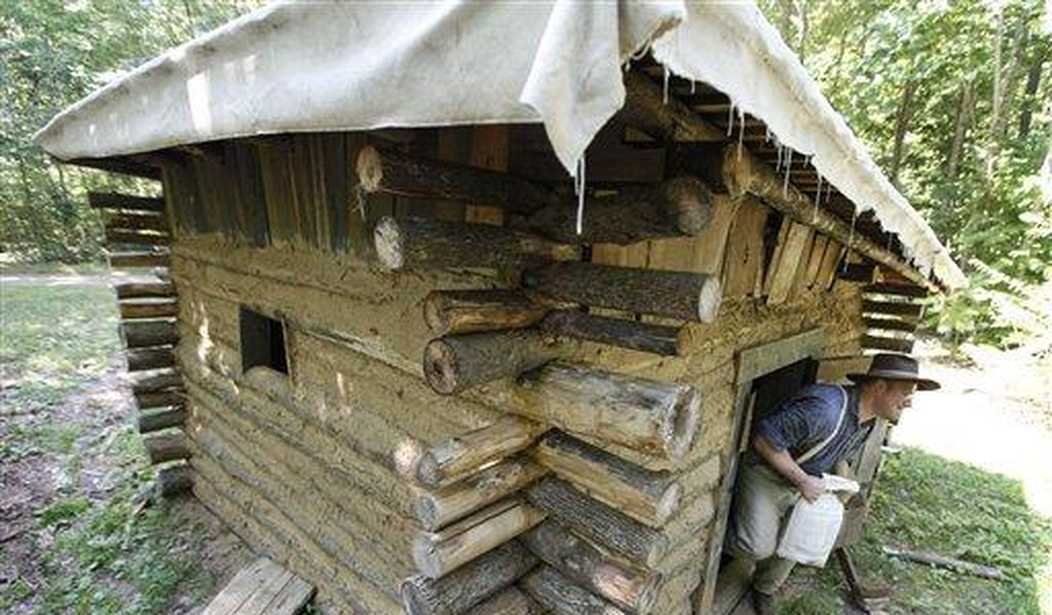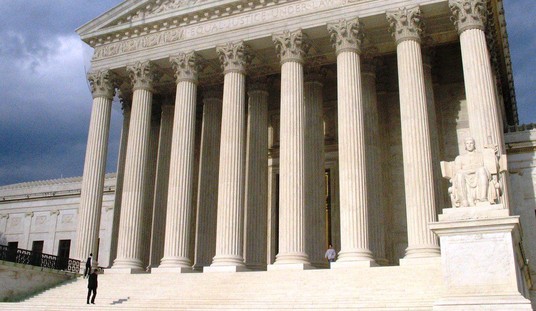I'm an out-and-proud history nerd, and I always love it when I come across a nugget of 2A history in the course of my readings. Last night, as I was thumbing through an old paperback of Daniel Boorstin's "The Americans: The National Experience" that I found the last time I went thrifting with my youngest daughter, I stumbled across a true gem related to one of the ugliest times in the pre-Civil War era: "Bleeding Kansas".
The political violence that wracked Kansas Territory between 1856 and 1861 presaged the deaths of hundreds of thousands of Americans in the following years. Pro- and anti-slavery forces battled each other for control of the state in the legislature and in the towns, farms, and homesteads that were beginning to dot the countryside, even as thousands of Americans moved to the territory to start a new life. Dozens, perhaps hundreds, were killed in the fighting, which took the form of small-scale battles involving dozens of people as well as interpersonal acts of violence between two individuals.
One of the most prominent voices in the region at the time was Robert Thompson Van Horn, editor of the Western Journal of Commerce and perhaps the biggest booster of Kansas City, Missouri, which had a population of less than 2,000 souls when he moved there in 1855.
Van Horn had a front-row seat to the breakdown of civil society in Kansas and the internecine political warfare that engulfed the state. And how did he respond? As Boorstin writes:
Trying to avoid politics altogether, Van Horn trimmed to the shifting winds of community opinion. Boosterism dominated all his other sentiments. For example, when civil war broke out in Kansas between pro- and anti-slavery forces, Van Horn was not distracted from the commercial progress of Kansas City. "We regret," he solmenly declared in his paper, "that the parties have concluded to go to war and settle their differences by bloodshed, but as they have so determined, we wish to remind them that they can buy powder and lead of our merchants at St. Louis prices, and other military supplies much cheaper."
Van Horn wasn't exactly run out of town on a rail after informing his Kansas readers of the deals to be found on arms and ammunition in Kansas City. Winning office as one of the city's alderman in 1857 as a pro-Union Democrat, he was elected mayor as a Republican in 1861, serving briefly before enlisting in the Union Army and serving with the Missouri Volunteer Infantry. He was re-elected mayor in 1864, and went on to serve in the Missouri Senate and the U.S. House of Representatives.
Ever since the Supreme Court issued its decision in Bruen and instructed lower courts to look to the "text, history, and tradition" of the right to keep and bear arms, the Second Amendment's place in U.S. history has been the subject of scholars and advocates on both sides of the gun control debate. As many courts have concluded (albeit reluctantly, in some cases) the historical record is simply absent when it comes to things like regulating the capacity of a firearm or its rate of fire. In fact, until the post-Civil War era, there weren't many gun laws on the books at all, but even in the decades after the Civil War, there's no evidence of widespread bans on repeating rifles or multi-shot revolvers, much less one-gun-a-month laws, waiting periods, or "red flag" provisions.
But Van Horn's comment, and the apparent lack of controversy over what he said, indicates that the "national tradition" of gun ownership was strong enough that even when political violence was endemic in the Kansas Territory, with pro- and anti-slavery individuals stuck in a cycle of retaliatory killings, disarmament was never a serious consideration of the people. Politicians might have bleated protests about sending guns to the territory, but that didn't stop the people from doing it anyway.
Van Horn, who wanted the tiny town of Kansas City to become a sparkling jewel of Midwest commerce, had a vested interest in the region's stability. But when violence broke out over the future of Kansas as a free or slave state, Van Horn (nor any others, from what I've been able to tell) demanded that the people be disarmed of their rifles and sidearms. Arming new Kansas residents seems to have been a much bigger priority among the people (if not the political class). Was it controversial? Absolutely. But from what I've read, even the staunchest opponents weren't arguing that the people of Kansas didn't have the right to be armed for self-defense.
I'll freely admit that I'm not an expert on Kansas history, though I'm doing my best to do a deep dive on this particular era. While I've seen several accounts that reference Congress and President Franklin Pierce banning the transportation of arms into the Kansas Territory, I've not yet been able to identify any specific statute or executive order doing so (as an armchair historian, I'm well aware that there's always more to be learned, so if you have any citations please send them my way).
Instead, I've read about groups like the New England Emigrant Aid Society sending hundreds of rifles to abolitionists who were moving to the territory so they could tip the political scales in favor of Kansas coming into the Union as a free state. As scholar W.S. Isley wrote about the society in 1907 edition of the American Historical Review, "they had included their friends and neighbors to go to Kansas; when the crisis came, they stood by their compatriots with manly courage and openly informed the President at Washington that they had sent arms to Kansas."
Neither the company nor its founder Eli Thayer were ever charged with a crime for shipping those rifles into the Kansas Territory, which is another indication that using the most modern firearms available at the time (most of the rifles that were shipped to Kansas were Sharps rifles; cutting edge technology for the mid-1850s) to defend against violence wasn't seen as unconstitutional. It was a given that the right to keep and bear arms applied to those living in the territory, no matter how controversial shipping rifles to Lawrence and Manhattan might have been among those who were hoping to stave off a broader civil war.
I know the Supreme Court has said that we can't look to the territories when trying to determine the national tradition of keeping and bearing arms, but I still think it's worth noting that the large-scale violence in the Kansas Territory did not lead to the formation of a 19th century Everytown for Gun Safety or Handgun Control, Inc. Quite the opposite. Famed figures of the day like Henry Ward Beecher openly advocated anti-slavery emigrants be armed for self-defense rather than demanding the federal or territorial government disarm its citizens, groups like the New England Emigrant Aid Society answered the call, and boosters like Robert Thompson Van Horn did their best to inform residents that powder and lead was available at reasonable prices in Kansas City.
It seems to me that this is an indelible part of our national tradition of gun ownership too; that even in times of outright political violence we the people still possess an uninfringeable right to keep and bear arms. Given what the Supreme Court has said about the importance of 1791 and (to a lesser extent) 1868 as the periods most important to judging modern gun laws, as well as its dismissal of territorial laws when establishing that national tradition, I doubt Bleeding Kansas is going to come up in a lot of Second Amendment cases. Still, it's an interesting case study of what policies seemed to be off the table in a time of turmoil, violence, and a sense that the country was ripping apart at the seams.









